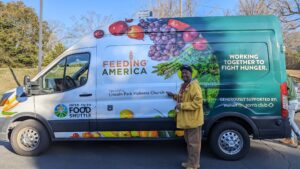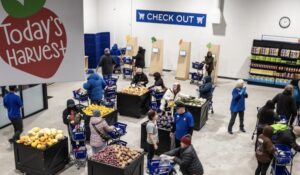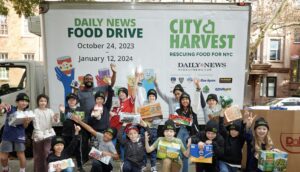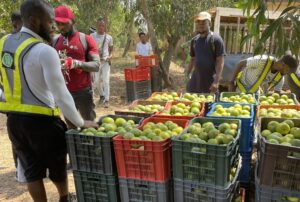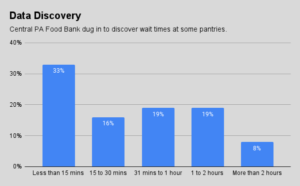A service that lets home gardeners donate their excess produce to hunger relief organizations has expanded from 23 zip codes in 2019, to 985 zip codes currently.
A mobile version of the service, which was introduced last year and helps coordinate transportation of the donated produce, helped propel that expansion. Now Fresh Food Connect, which started in Denver in 2016, is looking to expand nationally.
The expansion is coming at a time when food banks are keenly attuned to the need to increase distributions of healthy food. Gardens offer an “untapped channel of food procurement,” said Laura Lavid, Product and Operations Director at Fresh Food Connect, speaking at a TechSoup webinar event in April.
According to Lavid, 41% of Americans have a home garden with an average plot size of 600 square feet, and an additional 35,000 or so community gardens populate the nation. Gardeners have an average seasonal yield of 400 to 600 pounds of fresh produce, and the vast majority of them have never donated to a hunger relief organization.
Fresh Food Connect is not the first to try to create links between home gardeners and hunger relief agencies on a national basis. Since 2009, AmpleHarvest.org has run a website that gardeners can use to locate pantries in their area that are open to receiving donations. Currently, about 9,000 pantries across all 50 states are listed on the registry.
With the mobile app it introduced last year, Fresh Food Connect is streamlining the donation process by facilitating the logistics of whether a gardener will drop off or a pantry will pick up, or a courier will get involved. The app supports functions like scheduling, reporting, and the mapping of optimal routes.
Groundwork Milwaukee, which is well-known for its community gardens and agricultural work, began using the Fresh Food Connect app in 2020. From July through September, it brought in over 600 pounds of food to distribute among the city’s neediest residents.
“Our experience with Fresh Food Connect has been very positive,” says Samson Srok, Food Systems Specialist. “I think it’s very empowering for home gardeners to have fewer barriers to donate produce. And the excitement about the program has brought more attention to our organization as a whole.”
Given that many gardeners may only have small amounts to donate, is it worthwhile to make the effort to pick up the produce or have it dropped off?
“I think it’s worthwhile for our organization to learn how to be the vegetable middleman and help community members imagine a future where programs like this are more commonplace and something more gardeners are aware of,” Srok said.
He added that the organization is making some adjustments in the program. For instance, it is encouraging gardeners to plant extra just for donation, thus increasing their engagement, and supporting them by providing them seeds and seedlings.
“We’re also leading a series of novice and intermediate gardener workshops to support our donor-gardeners and set an intentional time to talk about the guiding principles of the program,” Srok said.
Groundwork Milwaukee has allocated one staff person, working three to five hours on the project each week. That would increase into a five- to eight-hour weekly commitment once produce pick-ups start from June to September. An unpaid intern contributes a similar time commitment, Strok said.
He added, “Although not the intention of Fresh Food Connect, folks learning about this opportunity have brought more support to Groundwork Milwaukee in other ways, which is a great benefit.” — Maura Keller
Maura Keller is a Minneapolis-based freelance writer and editor.
Like what you’re reading?
Support Food Bank News
